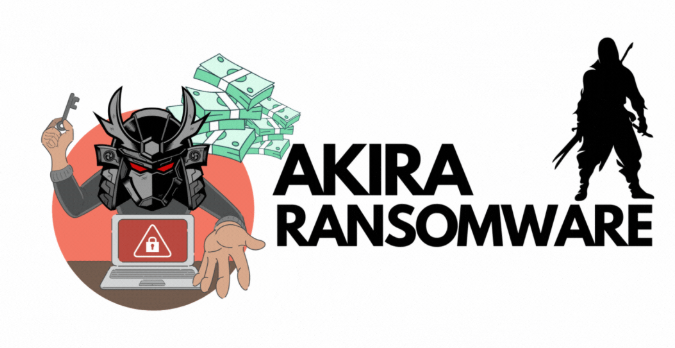Akira Hackers | OG News Desk: The Akira ransomware group is rapidly becoming one of the most feared names in global cybersecurity circles, responsible for crippling attacks on businesses, schools, and governments across continents. With highly coordinated operations, bold extortion tactics, and devastating consequences, Akira has cemented its reputation as a notorious cybercrime syndicate.
Discovered in March 2023, the group is believed to have links with or inspiration from earlier Russian-speaking hacker collectives. In just over two years, it has reportedly caused over $100 million in damages worldwide, targeting high-value organizations with ruthless precision.
Latest Wave of Attacks: Akira Hits Hard in 2025
In the first half of 2025 alone, Akira has launched attacks on:
- A major logistics firm in Germany, halting shipments for days and demanding a ransom of €3.5 million
- An American law firm, leaking confidential client files after non-payment
- Two universities in India and Canada, where student data, research material, and financial records were encrypted
- A smart-city project in Southeast Asia, causing temporary service outages in public utilities
According to cybersecurity firm Kaspersky and independent threat trackers, Akira’s victims now span across 30+ countries, with over 170 confirmed attacks listed on their dark web leak site.
🕵️♂️ Who Is Behind Akira? Tracing the Shadowy Origins
Akira emerged with a unique ransomware strain bearing its name — likely a reference to the 1988 Japanese anime “Akira,” which depicts a dystopian future of chaos and rebellion. This might be symbolic of the group’s mission to disrupt the digital status quo.
Cybersecurity analysts suggest that Akira may have roots in Conti, a dismantled Russian-speaking ransomware gang that splintered in 2022. Some malware code similarities, negotiation styles, and server configurations point to experienced hackers rebranding under a new banner.
Akira is not a Ransomware-as-a-Service (RaaS) platform like LockBit or BlackCat — it appears to be a centralized, closed operation, making it harder to trace or infiltrate.

🧬 How Akira Operates: From Breach to Extortion
Akira uses a double-extortion model:
- Initial Access: Exploits VPN vulnerabilities, weak credentials, or unpatched applications.
- Data Exfiltration: Before encrypting, they steal large volumes of sensitive data.
- Encryption: Files are encrypted with a
.akiraextension, and a ransom note is dropped. - Negotiation: The victim is directed to a Tor-based chat site for payment demands.
- Leak Threat: If the ransom isn’t paid, stolen data is published on their leak site.
What makes Akira especially dangerous is their willingness to negotiate aggressively, use voice communication, and publicly shame victims to force payments.
💸 Global Impact: Losses, Downtime & Reputational Damage
The Akira ransomware attacks have resulted in:
- Over $100 million in financial losses globally
- Unrecoverable data leaks, including legal, medical, and student records
- Operational shutdowns lasting from 3 to 14 days for many mid-sized companies
- Regulatory penalties in countries with strict data protection laws (e.g., GDPR in Europe)
Many organizations that refused to pay have faced dark web exposure, leading to further legal troubles and customer backlash.
🛡️ Defense Against Akira: What Experts Recommend
Governments and cybersecurity agencies, including CISA, FBI, and CERT-In, urge organizations to take the following measures:
- Implement Multi-Factor Authentication (MFA)
- Regularly update and patch systems
- Limit remote access (especially via VPNs)
- Encrypt sensitive data internally
- Back up systems offline and test recovery plans
Businesses are also advised to monitor the dark web for early signs of compromised credentials that Akira might use to infiltrate networks.

🔚 Final Words: Akira Is Just the Beginning
Akira isn’t just another ransomware group — it represents the evolution of cyber extortion into a highly coordinated digital warfare strategy. As AI, IoT, and cloud integrations grow, the attack surface for hackers is expanding, and groups like Akira are quick to exploit these gaps.
Experts warn that Akira’s next targets may include critical infrastructure, financial institutions, and supply chains, which could lead to far-reaching economic and societal disruptions.





